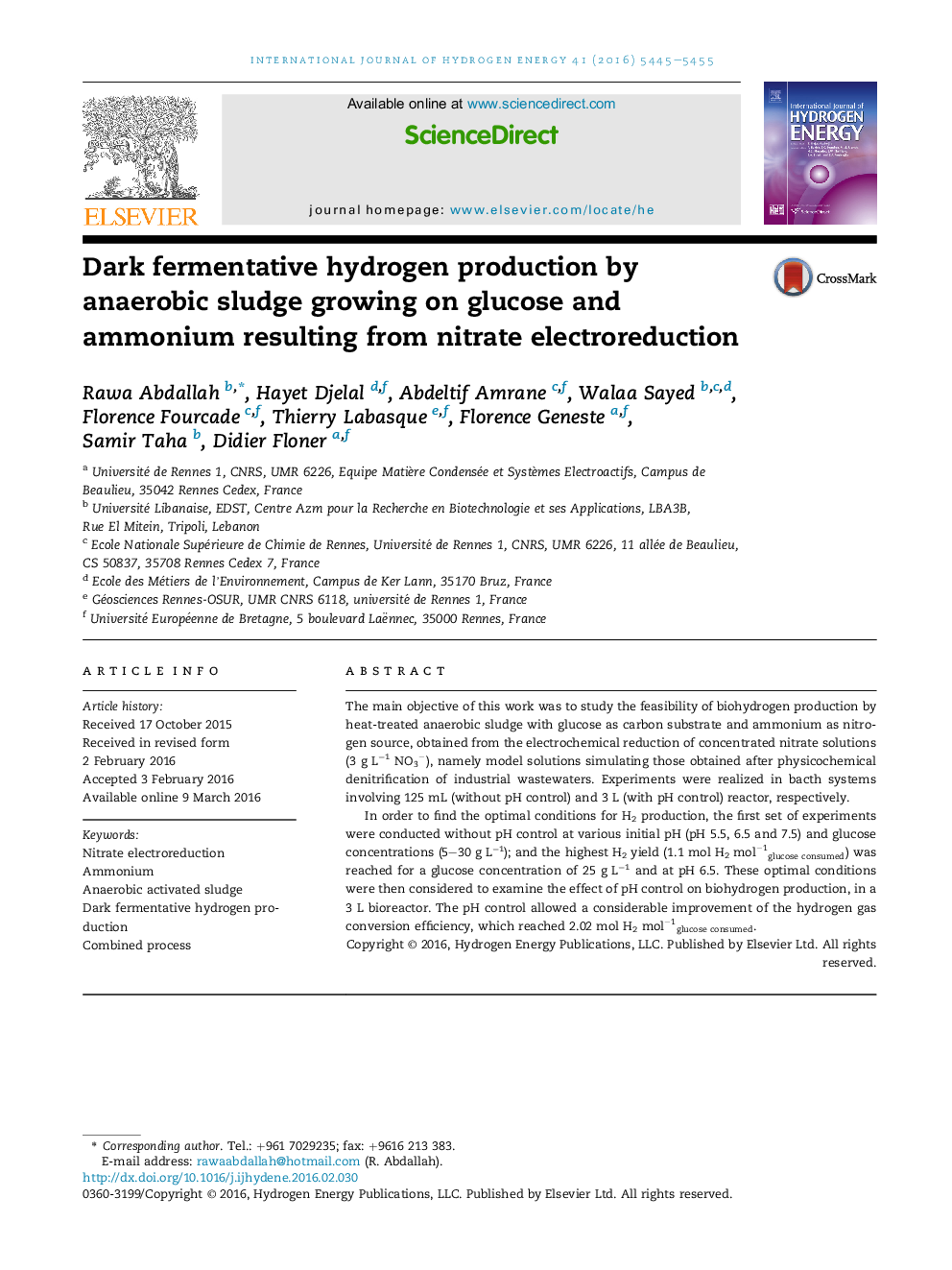| کد مقاله | کد نشریه | سال انتشار | مقاله انگلیسی | نسخه تمام متن |
|---|---|---|---|---|
| 1268785 | 1497413 | 2016 | 11 صفحه PDF | دانلود رایگان |
• The production of biohydrogen via anaerobic sludge growing on ammonium generated electrochemically was proved.
• pH control allowed a considerable improvement of the hydrogen gas conversion efficiency.
• In case of pH control, hydrogen yield was 2.02 mol H2mol−1glucoseconsumed.
• Complete assimilation of the obtained NH4+NH4+ (0.86 g L−1NH4+NH4+) was achieved.
• Environmentally friendly coupled process for hydrogen production and nitrate treatment was developed.
The main objective of this work was to study the feasibility of biohydrogen production by heat-treated anaerobic sludge with glucose as carbon substrate and ammonium as nitrogen source, obtained from the electrochemical reduction of concentrated nitrate solutions (3 g L−1NO3−NO3−), namely model solutions simulating those obtained after physicochemical denitrification of industrial wastewaters. Experiments were realized in bacth systems involving 125 mL (without pH control) and 3 L (with pH control) reactor, respectively.In order to find the optimal conditions for H2 production, the first set of experiments were conducted without pH control at various initial pH (pH 5.5, 6.5 and 7.5) and glucose concentrations (5–30 g L−1); and the highest H2 yield (1.1 mol H2mol−1glucoseconsumed) was reached for a glucose concentration of 25 g L−1 and at pH 6.5. These optimal conditions were then considered to examine the effect of pH control on biohydrogen production, in a 3 L bioreactor. The pH control allowed a considerable improvement of the hydrogen gas conversion efficiency, which reached 2.02 mol H2mol−1glucoseconsumed.
Journal: International Journal of Hydrogen Energy - Volume 41, Issue 12, 6 April 2016, Pages 5445–5455
